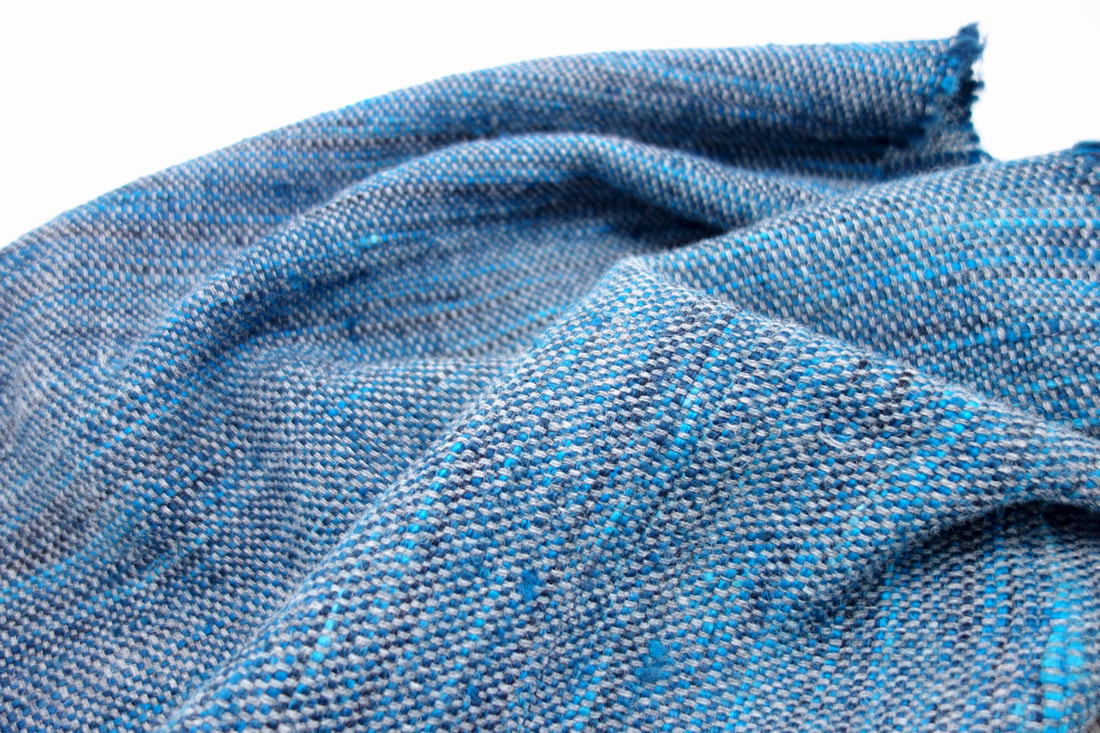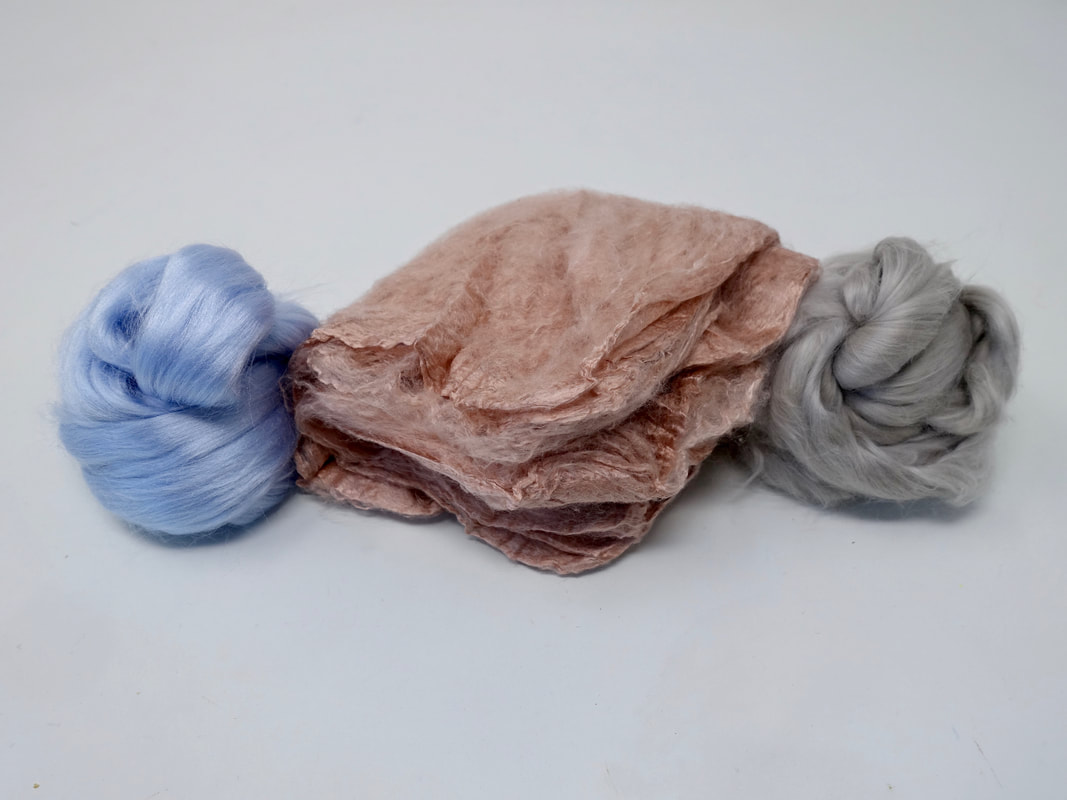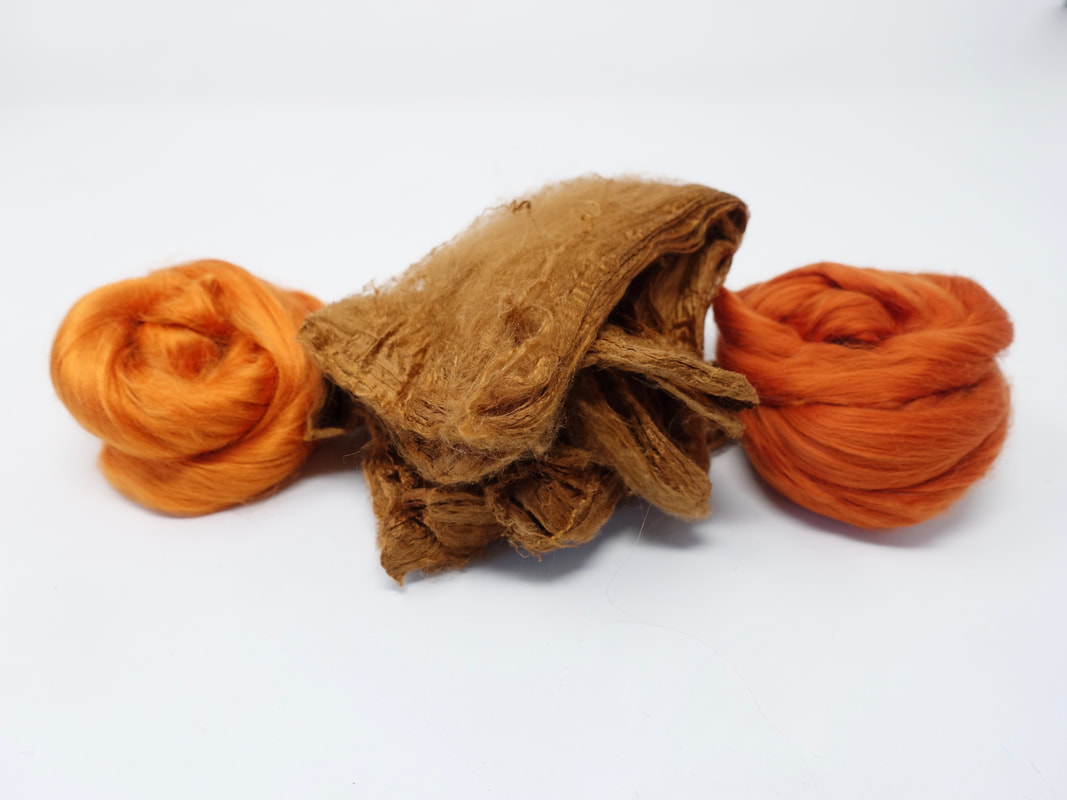|
The final round of the latest 3 month block of this club was posted on Monday, so should be arriving with UK members on Wednesday. As ever, there are spoilers below, so if your parcel hasn't arrived yet, you may want to come and read this later. This is the final round for this club, and I'm going to put it on pause for a while, December and January are always more complicated to mange, even if I'm working suppliers quite rightly give their employees time off over the holidays, so it's simpler to take a break. Meanwhile, the Non-Wool section of the club is stuffed full of lots of fibres, so there's plenty to experiment with. The extra fibre from last month is now listed in the shop, should you want to spin a larger amount. The November light wasn't being helpful as I filmed the videos using my limited technology, so you may find it helpful to go through the playlist archive and look at some of the videos I've filmed when the Viscose and Cotton have featured before as they will show a better close up of my hands. The first fibre to start off with is Viscose. This will be most like any other fibre you will have spun before, it has a similar feel to silk, with a moderate staple length. Viscose is a wood pulp based cellulose fibre, it's manmade, but still biodegradable. You'll sometimes see it referred to as Rayon. In essence, if you spin this like silk you won't go far wrong! For maximum shine spin straight from the end of the length of top, you ca use a plyback test to check your twist levels. If you find it too slippery, then switch to spinning from the fold, and this may give you more control. This Viscose is made in the EU, so it's production will have complied with EU regulations on water disposal, and worker health. There are some concerns surrounding the environmental effects of the production of this type of fibre, but this supply is one that I believe you can trust to be responsible. The next fibre to have a go with is cotton. This is a very short stapled fibre, and you will need a lot of twist to make a successful yarn. It needs to be spun finely, fat cotton yarn is made by putting multiple strands together. If you try to spin a thicker single the short stapled fibres will not have enough twist. You can spin using a short forward draw, or just relax, let the twist do the work, and try a form of long draw. If you own a quill this is the ideal fibre to spin on it, or if you have a very fast spindle, takhli or similar. Our final fibre is probably going to be a marmite fibre... you will either love this fibre or hate it! Silk Hankies are also known as Mawata, they're made from a whole silk cocoon stretched out over a square frame. If you look closely you might see the holes in the corners. The same technique also produces a fibre known as Silk Caps... for future reference you can treat them just the same as hankies. The first step is to peel off a single layer, look closely at your stack of hankies and you will see a rolled edge. Pull off what looks like a single layer, then double check to make sure it's not 2 hankies stuck together. Once you have a single hanky, poke a hole in the middle and stretch it out in to a thin strip. You are aiming to do most of the drafting before you start adding twist. The individual fibres are so long that drafting once you have some twist in the mix can be very hard work. If you find that you have got a slightly thicker bit you can ease out some fibres, but you will need to have your hands really far apart.. no further... no further still! If you like step by step instructions then this article from an old edition of Knitty might help. Not everybody enjoys spinning hankies, they are hard on the hands, and some people who only like smooth yarns aren't fond of the texture. The long staple length means you can leave it as a single, or you can use them for plying. Alternatively, if you decide you hate this fibre all is not lost! They are versatile beasts and can be used for other things. If you have a blending board or drum carder and like creating textured batts then take some scissors to your hankies and card them in, they create fabulous texture. You must cut them up first though, otherwise they will wrap round and round your drum and you will never bet able to remove your batt! If you want warmth, then you can knit straight from the unseen silk hanky. You still have to do the stretching stage, but no i=need to add twist. They would be amazing as lining mittens. Here's a pair made by the Yarn Harlot, and more details on how she did it here. Finally, if knitting or crochet aren't floating your boat, then you can also weave with them, and the fabric they make is stunning. Again, you still need to draft them out, but once that was done I just used my fingers to push the strip of fibre through the shed, and then beat lightly. Use a fine yarn to create a weft faced fabric. The result is very sturdy, I turned this in to a pair of cushions in 2014, and they're still on my sofa, and have been sat in by dogs on many occasions!
Comments are closed.
|
Archives
January 2024
Categories
All
|
Hilltop CloudHilltop Cloud- Spin Different
Beautiful fibre you'll love to work with. Established 2011 VAT Reg- 209 4066 19 Dugoed Bach, Mallwyd, Machynlleth,
Powys, SY20 9HR |






 RSS Feed
RSS Feed


